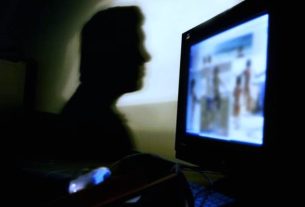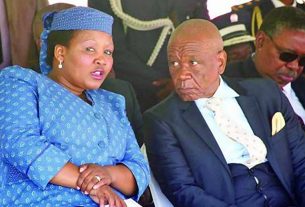Sat 23 October 2021:
Remains of 29 people, including three children, buried more than a millennium ago, were discovered a few weeks ago by a team of archaeologists at the Huaca Santa Rosa de Pucalá, an ancient ceremonial center in Lambayeque, 750 km north of Lima, that could help experts rewrite the history of the pre-Incan Wari civilization, the lead researcher said on Friday.
The enclosure in the shape of the letter “D” would have been built between the years 800 to 900 after Christ pointed out.

In the case of the remains of three children and a teenager, they were placed as human sacrifices, in the front part of the temple, according to Bracamonte.
The other 25 burials were found in tombs with pressed clay and in burial chambers, in another temple of the Mochica culture. In addition, pieces of pottery and the remains of camelids and guinea pigs were found.
The specialist described the finding as significant because for the first time offerings related to the Wari culture appear far from its area of influence.

“These findings allow us to rethink the history of the Lambayeque region, especially what is linked to the Wari and Mochica occupations in the area,” explained Bracamonte, who directs the Lambayeque Valley Archaeological Project.
The Wari culture was a civilization that flourished in the center of the Peruvian Andes, from the 7th to the 13th century AD.
:quality(75)/arc-anglerfish-arc2-prod-elcomercio.s3.amazonaws.com/public/TMIJDQ5HL5DSVC3UGNJLWHY3XU.jpeg)
The Mochica or Moche culture developed between the years 100 and 700, on the north coast of Peru. Among the notable discoveries of this culture are the intact tombs of some of its rulers, such as the Lord of Sipán (3rd century) and the Lady of Cao (5th century).
One of the most significant discoveries related to the Mochica culture was in 2006 with the unearthing of the fifth century Lady of Cao mummy, that showed the civilization included female leaders.
The 1987 discovery of another mummy, the third century Lord of Sipan, is considered by experts one of the most significant archeological discoveries in the last few decades, as the main tomb was found intact and untouched by thieves.
Photo: Undated handout picture released by the Royal Tombs of Sipan Museum of one of the 29 human remains discovered at an ancient ceremonial site in Lambayeque.
_____________________________________________________________________________
FOLLOW INDEPENDENT PRESS:
TWITTER (CLICK HERE)
https://twitter.com/IpIndependent
FACEBOOK (CLICK HERE)
https://web.facebook.com/ipindependent
Think your friends would be interested? Share this story!





